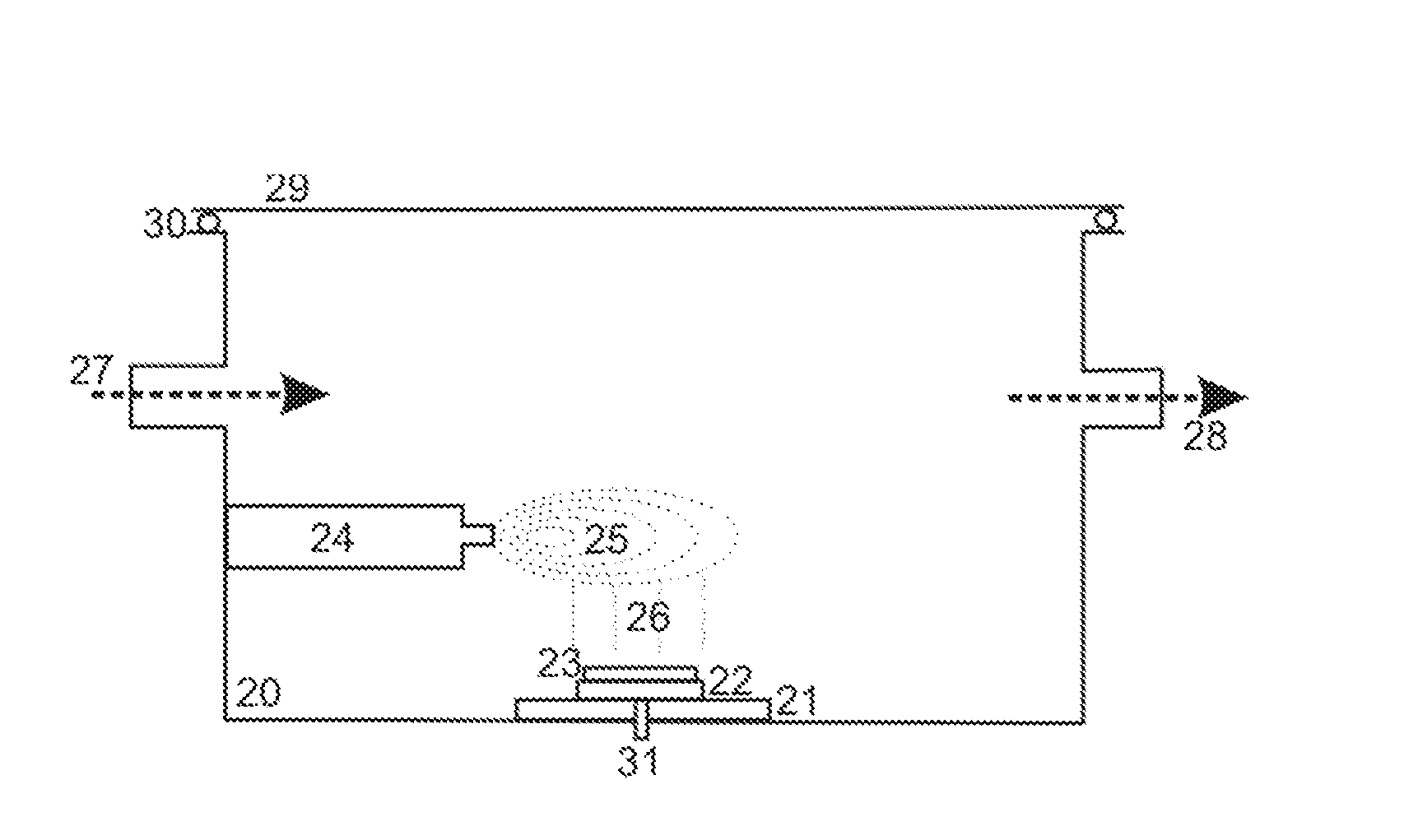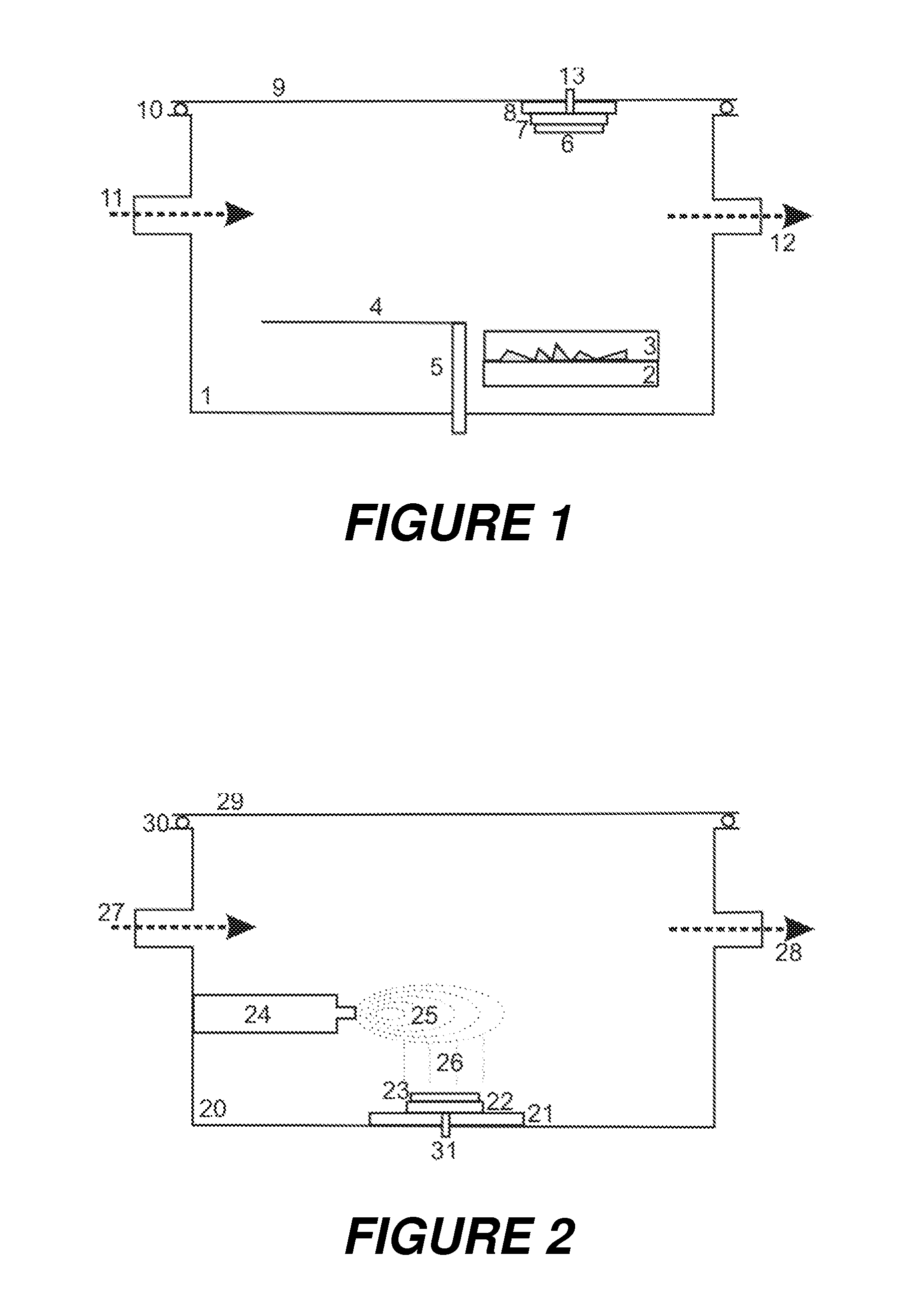Preparation of thin tissue sections for imaging mass spectrometry
a mass spectrometry and thin tissue technology, applied in material analysis, instruments, electric discharge tubes, etc., can solve the problems of unfavorable signal-to-noise ratio at the ion detector and limit the spatial resolution of the imag
- Summary
- Abstract
- Description
- Claims
- Application Information
AI Technical Summary
Benefits of technology
Problems solved by technology
Method used
Image
Examples
first embodiment
[0036]In the apparatus, as depicted in FIG. 1, the matrix substance is sublimed in a heated pan (3) on the floor of a chamber (1), while the thin tissue section (6) is located on a support (7) hanging from the lid at the top. The walls of the chamber (1) can be heated in such a way that no resublimation takes place there. The thin tissue section (6) on its support (7) can be cooled or heated to a specific temperature, by a Peltier element (8), for example. The matrix crystal layer is fed with matrix vapor from below. The chamber (1) can be charged with the vapors of the solvents for the swelling via an inlet (11), and can also be evacuated, if required, via the outlet (12).
[0037]In this first embodiment apparatus, a special preparation method may be performed. This special method uses a solvent which at the same time can swell the thin tissue section, transport peptides, and solve a part of the matrix layer for a recrystallization with embedding the peptides into the crystals. After...
second embodiment
[0040]In the apparatus, which is schematically depicted in FIG. 2, the thin tissue section (23) on its support (22) is located near the floor of a chamber (20). In this position, the matrix snow (26) can be applied by a sprayer (24), for example. To ensure the snow is applied uniformly, it must be possible to move the support (22) for the thin tissue section (23) in a variety of ways. Here again, the thin tissue section (23) on its support (22) should be able to be heated and cooled, by the Peltier element, for example. It is also possible here to feed in vapors of solvents or other working gases, such as inert nitrogen N2, via the inlet (27); the pressure can be regulated via the outlet (28). For example, a solvent can be fed in which forms a floor-level mist above the cold thin tissue section on the support (22). This mist slightly dissolves the matrix crystals of the snow and thus incorporates the analyte molecules into the matrix crystals during the subsequent recrystallization....
PUM
| Property | Measurement | Unit |
|---|---|---|
| pressure | aaaaa | aaaaa |
| pressure | aaaaa | aaaaa |
| thick | aaaaa | aaaaa |
Abstract
Description
Claims
Application Information
 Login to View More
Login to View More - R&D
- Intellectual Property
- Life Sciences
- Materials
- Tech Scout
- Unparalleled Data Quality
- Higher Quality Content
- 60% Fewer Hallucinations
Browse by: Latest US Patents, China's latest patents, Technical Efficacy Thesaurus, Application Domain, Technology Topic, Popular Technical Reports.
© 2025 PatSnap. All rights reserved.Legal|Privacy policy|Modern Slavery Act Transparency Statement|Sitemap|About US| Contact US: help@patsnap.com


